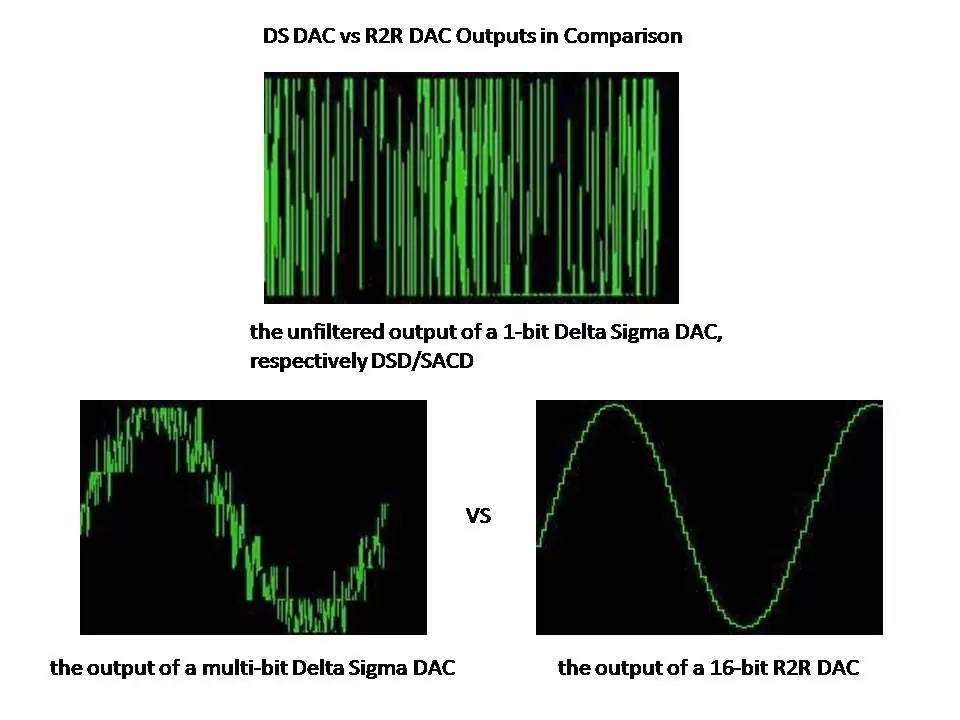It's an interesting topic and that AKM chip you mention is very intriguing! There are also multiple kinds of R2R DACs: The main two that I am aware of being the usual
segmented and sign-magnitude.
Example of segmented string are chips from Analog Devices such as AD1865 and AD1868 which use the (partially) segmented design:
The DACs on the AD1865 chip employ a partially segmented
architecture. The first four MSBs of each DAC are segmented
into 15 elements. The 14 LSBs are produced using standard R-2R
techniques. Segment and R-2R resistors are laser trimmed to pro-
vide extremely low total harmonic distortion. This architecture
minimizes errors at major code transitions resulting in low out-
put glitch and eliminating the need for an external deglitcher
Example of sign-magnitude are the famous Burr-Brown PCM1704 or PCM63:
SIGN-MAGNITUDE ARCHITECTURE
Digital audio systems have traditionally used laser-trimmed,
current-source DACs in order to achieve sufficient accuracy.
However, even the best of these suffer from potential low-
level nonlinearity due to errors in the major carry bipolar
zero transition. Current systems have turned to oversampling
data converters, such as the popular delta-sigma architec-
tures, to correct the linearity problems. This is done, how-
ever, at the expense of signal-to-noise performance, and the
noise shaping techniques utilized by these converters creates
a considerable amount of out-of-band noise. If the outputs
are not properly filtered, dynamic performance of the overall
system will be adversely effected.
The PCM1704 employs an innovative architecture which
combines the advantages of traditional DACs (e.g., excellent
full-scale performance, high signal-to-noise ratio, and ease
of use) with superior low-level performance. This architec-
ture is referred to as sign-magnitude. Two DACs are com-
bined in a complementary arrangement to produce an ex-
tremely linear output. The two DACs share a common
reference, and a common R-2R ladder for bit current sources.
The R-2R ladder utilizes dual balanced current segments to
ensure ideal tracking under all conditions. By interleaving
the individual bits of each DAC and employing precision
laser-trimming of resistors, a highly accurate match between
the two DACs is achieved.
The sign-magnitude architecture, which steps away from
zero with small steps in both directions, avoids any glitching
or large linearity errors, and provides an absolute current
output. The low-level performance of the PCM1704 is such
that true 24-bit resolution can be realized around the critical
bipolar zero point.

